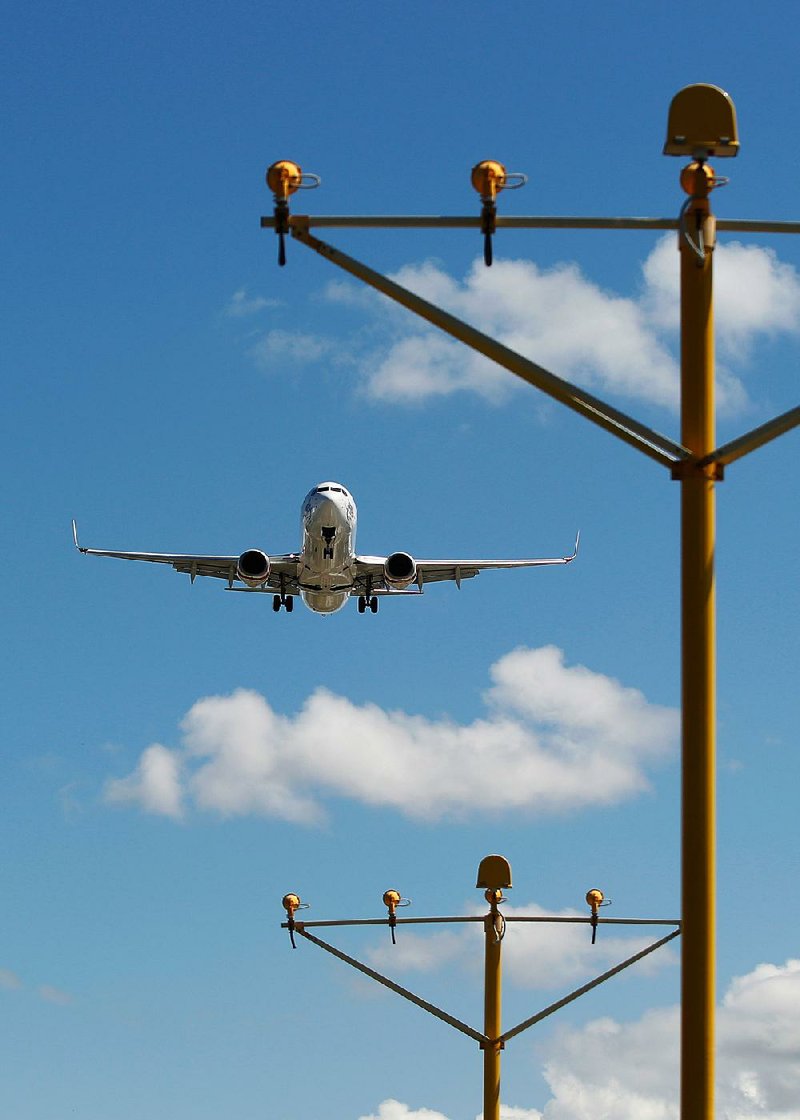The Securities and Exchange Commission is investigating whether Boeing properly accounted for the costs and expected sales of two of its best-known jetliners, according to people with knowledge of the matter.
The inquiry centers on projections Boeing made about the long-term profitability for the 787 Dreamliner and the 747 jumbo aircraft, said one of the people, who asked not to be named because the investigation isn't public. Both planes are known for the technological advancements they introduced, as well as the development headaches they produced.
Underlying the SEC review is a financial reporting method known as program accounting that allows Boeing to spread the enormous upfront costs of manufacturing planes over many years. While the SEC has broadly blessed its use in the aerospace industry, critics have said the system can give too much leeway to smooth earnings and obscure potential losses.
"We typically do not comment on media inquiries of this nature," Boeing spokesman Chaz Bickers said in an emailed statement. SEC spokesman John Nester declined to comment.
SEC enforcement officials have yet to reach any conclusions and could decide against lodging a case, said the people. The issues involved are complex and there are few black-and-white rules governing how companies apply program accounting, one person said.
Program accounting has been around for decades. It was first championed by the aerospace industry to address the problem that companies' biggest expenses are amassed upfront, as they design planes and devise manufacturing processes. Costs typically fall as the assembly becomes more efficient, making it cheaper to build the later jets than the earlier ones.
The method, which is fully compliant with Generally Accepted Accounting Principles, lets companies average out the costs and anticipated profits over the duration of the "program" for a specific jet, a period that can last decades and encompass hundreds or even thousands of aircraft.
The expected costs and sales are estimates and they must be updated -- and a loss recorded -- when the program is determined to have reached a point where earnings won't catch up to losses.
As part of the investigation, SEC enforcement attorneys are examining whether Boeing's financial statements relied on sales forecasts that might be too optimistic, one person said. Another avenue of inquiry is whether Boeing's estimates for declining production costs will reach fruition, the person said.
A whistleblower has given SEC officials internal documents and data about Boeing's accounting, according to the people. The tipster first raised concerns with the regulator more than a year ago, one person said. SEC policy is not to reveal the identities of whistleblowers.
Over the years, a few aerospace analysts have questioned whether Boeing will be able to recoup its costs for both the 787 and the latest 747, both of which debuted far behind schedule in 2011. In general, the company has enjoyed a good reputation on Wall Street, earning billions of dollars in annual profits and winning "buy" recommendations from most researchers who follow the industry.
Boeing's accounting projects that the company eventually will make money on the Dreamliner despite already spending $28.5 billion on inventory and manufacturing. The forecast hinges on Boeing selling about 1,300 planes and assumes profits on its later deliveries will offset high costs stemming from early production snarls.
Boeing told investors during a January conference call that its Dreamliner expenses would plateau this year and then begin to decline as it speeds up production.
"We still have work ahead of us on the 787," Boeing Chief Executive Officer Dennis Muilenburg said on the call. He added that the company is "focused on solid day-to-day execution and risk reduction, while improving long-term productivity and cash flow."
Some analysts are skeptical that margins will improve enough to offset money that Boeing already has poured into the 787. Credit Suisse Group analyst Robert Spingarn estimated the company may face a $7.5 billion shortfall on the jet, according to a December report.
Shares of Chicago-based Boeing fell more than 10 percent after Bloomberg News published a report shortly after 9:30 a.m.
The shares fell $7.92, or 6.8 percent, to close Thursday at $108.44. The previous biggest one-day drop occurred Jan. 27 when the shares fell $11.43.
Competitive pressure is forcing Boeing into a new cost-cutting push that will include eliminating jobs, Ray Conner, chief executive officer of Boeing Commercial Aircraft, said Wednesday at a senior leadership meeting and in a webcast to all employees.
No details were given on the timing or scale of the job cuts, but the tone of the announcement suggests a significant impact across the division.
"We will start reducing employment levels beginning with executives and managers first," said company spokesman Doug Alder. "We will also use attrition and voluntary layoffs. As a last resort, involuntary layoffs may be necessary."
"The overall employment impact will depend on how effectively we bring down costs as a whole," Alder added.
At the beginning of this year, Boeing employment in Washington state stood at 79,238.
That's down almost 7,800 jobs from the most recent peak in the fall of 2012 of 87,023.
Information for this article was contributed by Robert Schmidt, Julie Johnsson and Matt Robinson of Bloomberg News; by The Associated Press; and by Dominic Gates of The Seattle Times.
Business on 02/12/2016

